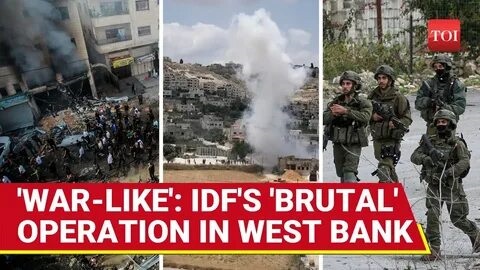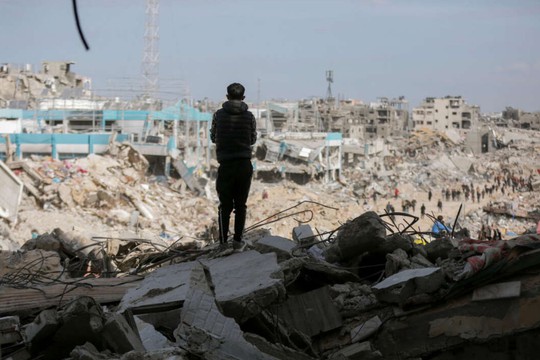A boy stands amidst the rubble of a destroyed building looking into the distance in Gaza City on January 19, 2025.
Photo: AFP
Rescuers have recovered 200 bodies from Rubble in Gaza, With 10,000 more buried. Officials estimate that 2,840 people’s bodies were evaporated entirely by Israeli attacks, the ‘Truthout’ reveals.
Rescuers in Gaza have already recovered hundreds of bodies from under the rubble in Gaza in less than a week since the ceasefire began, Gaza officials reported on Wednesday, with thousands more Palestinians’ bodies still trapped under the rubble.
The Palestinian civil defense agency and medical facilities have reported that, since Sunday, about 200 bodies have been recovered from under debris. Since the ceasefire, 248 deaths have been added to the official death toll, with health facilities reporting receiving 54 bodies in the last 24 hours — a mix of bodies rescued from the rubble and Israel’s seeming ceasefire violations in recent days.
This has brought the total death toll of the genocide to 47,161 people, according to official counts, with over 111,100 injured.
As the rescue efforts demonstrate, the true toll is likely far higher, with thousands of people missing under the rubble. One recent study in The Lancet found that the death toll from traumatic injury alone is likely over 64,000 people, 40 percent higher than the official toll — and that’s before counting deaths from other causes like starvation and disease.
Officials estimate that there are 10,000 bodies still trapped under the rubble, including thousands of children. Each of these bodies represents a family member, friend and neighbor who effectively went missing amid the genocide, some of their deaths presumed but never confirmed by loved ones.
Some bodies may never be found. An estimated 2,840 bodies have been evaporated by Israeli attacks, impossible to count because all trace of them is gone, Gaza civil defense spokesperson Mahmoud Basel has said. Others may be buried in unmarked mass graves.
Many bodies were torn into pieces by Israel’s bombs and rendered completely unrecognizable, forcing Palestinians to search for any scrap that may identify them, like a shred of a shirt or a shoe.
According to the UN satellite assessments, there are 50 million tonnes of debris in Gaza as of December, with over 170,800 structures damaged or destroyed by Israel’s bombardments. Removing the debris would take 21 years at least, officials say, and cost up to $1.2 billion.

Israel’s escalating military campaign in the West Bank sets the stage for a pivotal confrontation in Palestinian resistance, writes Ramzy Baroud, the Editor of ‘The Palestine Chronicle’.
The Israeli army continued its onslaught on the Jenin refugee camp, a military campaign that began almost immediately after a Gaza ceasefire was announced.
Though the epicenter of the campaign remains in Jenin, where many Palestinians have been killed or wounded, major West Bank cities have also been raided.
Israeli raids have reached numerous villages and refugee camps, leading to the arrest of many Palestinians.
It is unclear whether a similar rebellion against the PA is possible in the West Bank, at least for now, considering the Palestinian population there faces three tiers of violence: the Israeli army, armed illegal Jewish settlers, and Abbas’ security forces.
The Israeli military operation in the West Bank, codenamed ‘Iron Wall’, was ostensibly carried out for the sake of “destroying terrorist infrastructure in Jenin,” and preventing another October 7, according to Israeli security sources cited by Channel 14.
However, this cannot be true. Even with heightened resistance in the northern West Bank, the region appears unprepared for an October 7-like Al-Aqsa Flood Operation.
The logic of the ‘Iron Wall’ lies more within the political and psychosocial realms.
First, Israel was defeated in Gaza, an unprecedented defeat in the history of the country, according to David K.Rees, writing in The Times of Israel. From the official Israeli viewpoint, the psychological impact of that defeat requires immediate action to prevent Israeli society and media from dwelling on its larger and long-term consequences.
This is partly why Israel is attacking the West Bank, which, at least for now, represents the soft belly of Palestinian resistance.
Israeli muscle-flexing is largely aimed at sending a message of power and control to the Israeli public, which has lost faith in its army, intelligence, and political institutions.
Second, the Israeli operation in the West Bank is part of a political trade-off between Israeli Prime Minister Benjamin Netanyahu and extremist Finance Minister Bezalel Smotrich. The latter, though opposed to the Gaza ceasefire, remained in the government, bolstering Netanyahu’s fractious coalition.
While Israeli leaders ramp up violence in the West Bank for political gains, they are not paying much heed to warnings from military and intelligence leaders.
Palestinian anger resulting from the Israeli genocide in Gaza, coupled with the collective sense of victory from the ceasefire, makes the possibility of an Intifada very real. If such an Intifada takes place, much of the West Bank — and Palestinian political life — would change.
Will the West Bank erupt with the same vigor and determination to win against the Israeli occupation, as their brethren in Gaza have? If the answer is yes, the Israeli occupation will face another major blow, paving the road for Palestinian freedom.
read more in our Telegram-channel https://t.me/The_International_Affairs

 11:03 25.01.2025 •
11:03 25.01.2025 •























